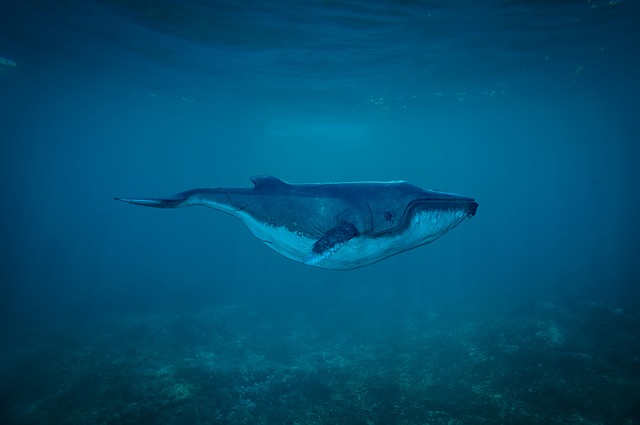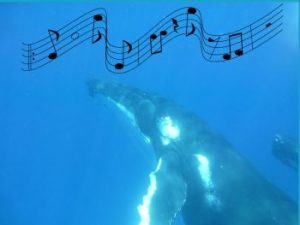
Among human beings, migrations from one place or country to the other occur due to some urgent need, but it does not do so routinely but becomes a decision of some. But different is observed in the Animal Kingdom. In many animals there is a routine, seasonal and periodic movement from one habitat to another. Always the origin is the same place and destination as well. That periodic routine is called “Migration“. How far do whales travel?
The whales that are known for the longest migrations are the humpback whales. During their migration these whales are known to travel as far as 16,000 miles making them one of the furthest migrating species in the world.
Why do whales migrate?
These periodic migrations occur to meet specific objectives. In the case of whales they can be in search of food or in search of a better place for mating and to give birth to calves.
When they travel to maintain food supply for themselves and their pods, they travel through colder waters, generally near the poles, and travel to warmer waters for mating.
Some traveling long distances that may amount to thousands of miles. Some whales migrate latitudinally (north-south), some move between onshore and offshore areas, and some do both.
For example, Humpback whales cross from one hemisphere to the other hemisphere of the world during feeding and breeding seasons.
Imagine undertaking this long journey without having a map, with poor visibility and without road signs. How will you make your way? Would it seem impossible? For whales, it is not. How can it be possible?
How do they recognize the route under the Ocean?
Scientists who study whales believe that animals use a combination of senses to find their way. these senses help them “see” the bottom of the ocean. It also helps them to adapt points of reference along the way and navigate in the right direction.
As we can see in the post “Communication between whales” that the whales use noises to communicate. They use a form of sonar called echolocation, making clicks and pops that reflect back to them, telling them the locations of things around them.
The whales send their vocalizations over thousands of miles to communicate and navigate during migration. A blue whale, for example, can take up to two minutes to sing just one note of its song. The frequency it sings at is too low to be heard by the human ear, but is one that can travel great distances through water because water is an excellent sound conductor. Emitting these sounds allows them to “see” the world around them.
Magnetic Sense of Whales
Many researchers believe that whales and other migratory animals have a magnetic sense that helps them know in which direction they are moving. For example, migratory birds have a chemistry called biomagnitite that makes them sensitive to changes in the earth’s magnetic field that helps them identify the route of their migration. Whales, like others of the cetacean family, have biomagnitite in the retina of the eyes that can work in the same way.
The intensity of the earth’s magnetic field fluctuates across the planet, and an animal able to sense these changes could potentially use them like a map. Something that the researchers have verified is that most magnetic field lines in the ocean run the same direction as the coastline. But in some places these lines change direction abruptly and turn in a direction perpendicular to the coast. It has been observed that in these places it is very common to find beached whales.
Even scientists do not have all the explanations but many agree that the magnetism of the planet and the navigation of the whales are related.
Scientists also think whales may have acoustic memories that function like our visual memories. In other words, when they’ve “heard” a certain route, they can search for familiar landmarks to guide them on their repeat migratory journeys.
Migration of the most common whale species
Blue Whale:
This animal is the largest ever known to have lived on this planet!!! An animal about the size of three school buses parked end-to-end, with a weight roughly equivalent to 40 elephants!!!
It is believed that most Blue Whales migrate between tropical waters and polar waters.We can divide the migratory stages of the blue whale in two stages:
The feeding season: During this period, usually in summer, they can be seen stocking large quantities of food in preparation for migration to areas such as the Farallón Islands, the Channel Islands and Monterey Bay.
The mating season: in the winter months, these sea giants migrate to the warmer tropical regions. Places near the equator. Places like the Gulf of Mexico and Costa Rica, where they can leave their offspring and/or mate with other whales.
Gray Whale:
The Gray Whale is the whale that travels longer distances in its migration. A trip of around 10,000 -12,000 miles round trip.
At present they only inhabit the north of the Pacific Ocean, near the Arctic.They leave their territory in the months of November or December, starting from the Bering Sea. They begin their migration journey from their feeding areas to their mating areas. This annual trip begins along the coasts of Alaska, passing through Canada, the northern United States and California, until they reach a protective sanctuary in the warm, shallow waters of Baja California Sur, Mexico.
During this migration trip the gray whale travels at an average speed of around 5 mph for two to three months until it reaches its destination.
Throughout March gray whales that have finished mating may begin traveling back towards their feeding grounds in the eastern pacific with pregnant mothers and females that have just given birth staying behind until mid April to May before leaving.
This is likely to ensure themselves that they have enough time to recover from the mating season and to make sure their young will be able to safety make the long trip back to their feeding grounds around the Alaskan waters.
Humpback Whale:
The Humpback whales practically perform the same journey that gray whales do. A large number are in the Antilles to reproduce. Later, when summer approaches, they move towards the western side of the Atlantic to look for abundant food. Not all members go to the same place. Some pods go to one coast, while the rest prefer to set a totally different course. But they always meet again when the breeding season approaches.
They are in all oceans, except in the polar seas. Spend the summer feeding along the coast between California and Alaska. When the time comes to reproduce, it migrates to the warm waters of Hawaii, Mexico, Costa Rica, and Japan. The population in California migrates to Mexico and Costa Rica, and the population living in Alaska migrates to Hawaii.
There are records that traveled about 6000 miles, one of the longest migratory trips of any mammal on Earth.
Fun Facts about Humpback Whales
Most humpback whales make mammoth journeys every year between their feeding and breeding sites. Because seasons are reversed either side of the equator, Northern and Southern Hemisphere populations of humpbacks probably never meet; those in the north travel towards their breeding grounds in tropical waters as those in the south are travelling towards the pole to feed, and vice versa.
Something curious is the fact: Not all members of a particular population will travel together however. For example, the humpbacks that pass the eastern shores of Australia, on their way to summer feeding grounds in Antarctica each year, stop off in the warm waters of Hervey Bay. The first to arrive there are groups of older juveniles, followed by mature males and then by mothers and calves.
Right whale:
Right whales have habitat historically in all the world’s oceans from temperate to subpolar latitudes. Contemporary sightings of right whales have mostly occurred in the central North Pacific and Bering Sea. Sightings have reported as far south as central Baja California in the eastern North Pacific, as far south as Hawaii in the central North Pacific, and as far north as the sub-Arctic waters of the Bering Sea and sea of Okhotsk in the summer. Some live in the North Atlantic, others are in the North Pacific and there is a third group found in the waters of the Southern Hemisphere.
The three Right Whales groups are:
Southern right whales:
Southern right whales migrate between feeding grounds in the colder waters of Antarctica. And they spend summers in warmer breeding places closer to the equator.
They have a circumpolar distribution. These whales are found in Antarctica during the summer of the southern hemisphere (where they feed). And in subtropical waters to breed in winter. Southern right whales are mainly found in mating and breeding in shallow coastal waters off southern Australia, New Zealand, Argentina, Brazil, and South Africa.
North pacific Right Whale:
There are reports of sightings as far south as the center of Baja California in the eastern Pacific Nort. Either as far south as Hawai in the center of the North Pacific and north to the subarctic waters of the Bering Sea and the Sea of Okhotsk in the summer. Since 1996, frank whales were repeatedly observed in their critical habitat in the southeastern Bering Sea during the summer months. The migration patterns of the right whale of the North Pacific are unknown. It is thought that whales spend the summer in the northern feeding areas and migrate south to warmer waters, such as southern California, during the winter.
North Atlantic Right Whale:
Each fall, some right whales travel more than 1,000 miles. From its feeding areas of the Canadian Maritimes and New England to the warm coastal waters of South Carolina, Georgia and northeast Florida. These waters of the south are the only known breeding area for the species. It is an area where they regularly give birth and nurse their young. NOAA Fisheries has designated two critical areas of habitat determined to provide important feeding, breeding, and calving habitats for the population of right whales of the North Atlantic:
- Off the coast of New England (foraging area).
- Off the southeast U.S. coast from Cape Fear, North Carolina, to below Cape Canaveral, Florida (calving area).
Bowhead Whale
Typically, these whales inhabit the Arctic most of the time. Migrating northward in the spring in search of plankton-rich waters. And returning southward during the fall to mate and give birth to new offspring. . Migration speeds vary between 2 and 7 miles per hour (3.2 to 11 kilometers per hour).
Orcas or Killer Whales:
In terms of migration, orcas are usually conditioned by the migration of those species from which they feed. This fact is a product by changes in marine currents or seasonal migratory patterns of some species. In this sense, migration in search of food is much more important than migration by mating, since reproductive activities can occur at any time of the year.
Sperm Whale
Sperm whales are in all oceans of the world. The males, alone or in groups, are in higher latitudes. Sometimes they migrate to lower latitudes, and only the largest mature males appear to enter breeding sites near the equator. Females and calves remain in the warm tropical and subtropical waters of the Pacific, Atlantic and Indian Oceans throughout the year.
Minke Whale
There are two species of minke whales: the common or northern minke whale and the Antarctic or southern minke whale. Minkes are known for their curiosity and they sometimes swim beside ships at speeds of up to 21 miles/h.
The Antarctic minke whale and the common minke whale found in the North Atlantic. They undertake synchronized seasonal migrations to the feeding areas during the spring and to the tropics in the fall. The differences in the time of the seasons between the hemispheres prevent these species from mixing.
Fin Whale
Fin whales are in all the oceans of the world. They can migrate to subtropical waters to mate and give birth during the winter months. And to the colder areas of the Arctic and Antarctic to feed during the summer months. Although recent evidence suggests that during the winter fin whales may be dispersed in deep ocean waters.
Beluga Whale
They have migratory behavior, since most of the groups spend the winter on the margins of the ice sheets. But when summer arrives, at the moment of thawing, they move to the mouths of the rivers and to warmer coastal areas. Some populations are sedentary and do not migrate long distances during the course of the year.
You may also like…
In ofWhale.com you can find the online whale toys you’re looking for, like baby shark toys, stuffed toys or a whale bath toy. Let’s get started with the selected gallery or check more options on the links.
In our world, whales have a great message to transmit to humanity and we agree with them. For you and for your children choose the whale t-shirts best fits your message
Most people loves whales enjoy using CDs with the whale sounds , whale songs and sounds of the waves to obtain a peaceful and restful sleep, perform meditation and relaxation.
You want to go further than just follow the first step by step tutorials about whale drawings. Ofwhale.com is the place where you can find books and models you need to go deeper into the ocean and learn to draw your preferred whales and marine creatures.




